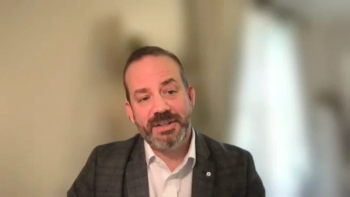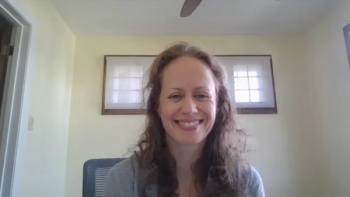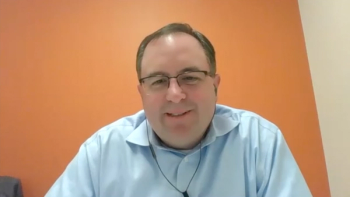
PX: Is Regulation the Pitfall of Technology and Innovation?
How are regulations hindering innovation in healthcare?
How do regulations hinder the innovation and potential use of technologies such as big data, artificial intelligence (AI), virtual reality (VR) and telemedicine? How are we building hospitals around big data and AI? Our expert panel weighs in:
Leveraging Big Data and AI in the Hospital of Tomorrow
A Healthcare Analytics News™ Peer Exchange®Segment 9/11
Kevin R. Campbell, M.D.: When we talk about the hospitals of tomorrow, are you guys aware of specific examples of where technology is at the forefront of a hospital? I know [John] has some clients overseas that are looking. If you could, share with us some specific examples of how we are building hospitals around big data and AI.
Josh Nosta, B.A.: What I find is that the value of technology in many developing countries and places around the world is not so much to find that nano-mediated early detection— nanoparticle mediated detection of cancer— but to use existing technology to leapfrog problems. For example, in Mexico, there’s a problem with physicians, so let’s implement telemedicine as a solution. Technology allows you to leapfrog and solve solutions, and I’m seeing that around the world. I’m seeing that in the Soviet Union. One of the biggest questions is: how can we build a hospital integrated into an existing infrastructure? In Bahrain, they’re looking at taking a hospital and building it around cardiovascular disease. In Bolivia, they’re looking at how we can leverage technology to not be a bastion of innovation, but leapfrog to a point where we can take care of our citizens. So I think it’s a hot button now around the world; people want to build new hospitals because they see it as an extraordinarily high capital expense. What’s it cost to build a hospital today?
David E. Albert, M.D.: Hundreds of millions of dollars.
>>
Josh Nosta, B.A.: It’s probably one of the most expensive things that you can build in a community. It’s essential, it’s necessary, but it’s really expensive. So the solution here is: how can we leverage VR and train my house staff by using guys over at Johns Hopkins or Duke University, and have them walk us through it. Those are really interesting options.
David E. Albert, M.D.: And at the same time, rural hospitals are closing at an incredible rate.
Kevin R. Campbell, M.D.: Those are easy access points for poorer people.
David E. Albert, M.D.: And so we have had a migration to urban areas in our country, but we still have tens of millions of people living in rural areas that are basically unserved— you don’t have to go to the South Pacific to find people to serve.
Kevin R. Campbell, M.D.: Absolutely, there’s plenty here at home.
Josh Nosta, B.A.: You go to South Jersey.
David E. Albert, M.D.: As I said, we could go to the South Pacific or South Jersey, both have a shore, right? I just think that technology will be critical. The technology we’ve discussed today — whether it’s big data, AI, telemedicine, virtual reality, these are all going to be critically important because it comes down to money and access. We’re not going to train more doctors, and doctors can’t come out of medical school with $350,000 of debt and then think they can go into rheumatology. There won’t be any rheumatologists because you can’t go into rheumatology and pay that back; my wife was there.
>>
Kevin R. Campbell, M.D.: Not anymore.
Geeta Nayyar, M.D., MBA: That brings up an important point, because I don’t think the question is: is the technology there? The technology is there; the innovation is there. What always hinders innovation is regulation; it’s the reimbursement and regulatory bodies that are saying what do we do with global medicine.
David E. Albert, M.D.: It’s the money.
Geeta Nayyar, M.D., MBA: It’s the money, right? So my doctors — we have 500 doctors — we can offer telemedicine. My doctors are not going out of business.
David E. Albert, M.D.: It’s not paid for.
Geeta Nayyar, M.D., MBA: They’re not going out of business. Their brick and mortar practice is not going out of business. Why would they do telemedicine? Why would they make $50 less or $100 less doing a virtual visit when the same advice can be given in person for more? That, you have to ask the regulators.
Kevin R. Campbell, M.D.: We have to change that in Congress. I can’t tell you how many times I’ve been to Capitol Hill and I’ll talk to leading legislators in both the House and the Senate and say “Remote monitoring. For every 1,000 patients we remotely monitor that have a pacemaker defibrillator, we can save 53 lives, and we can save this many hundreds of thousands of dollars to CMS [Centers for Medicare & Medicaid Services] and Medicare.” They look at me and say, “Well, why aren’t we doing that?” And I respond, “Because you guys don’t reimburse remote monitoring or you penalize remote monitoring indirectly.” Their lights go off and then the next step is you’re in a room with some intern who has no power, no idea, and nothing ever happens. That’s what’s wrong.
>>
Josh Nosta, B.A.: I know that health spends are capitated, the days of the DRG [diagnosis-related group]. And people think that it’s a zero sum game— that there is $100 on the table and if I start using telemedicine, they’ll get $20 and I’m going to lose that $5 that I got. That’s a real concern. It’s interesting, the days when radial keratotomy and LASIK surgery came en vogue. There was a real problem because eye doctors, even optometrists at that level, were afraid they were going to lose their business — people will not need glasses anymore and there was a real fear. What happened is the market expanded. It became more robust, and they ended up selling more reading glasses and sunglasses, and the market went in a different place than they thought. So I recognize that medicine is capitated. I’m not saying that we grow, but I think the market will change and physicians will find different revenue streams to accommodate some of those financial needs.
Kevin R. Campbell, M.D.: I think they’re going to have to, and we’re also going to have to decide if it is okay for medical schools to charge $100,000 a year. Is it okay for pharmaceutical companies to charge what they charge? Is it okay that we allow these types of huge punitive damages in a malpractice suit, so that physicians have to carry incredibly high-deductible policies?
Get the best executive insights directly to your inbox. Sign up for our
Related




